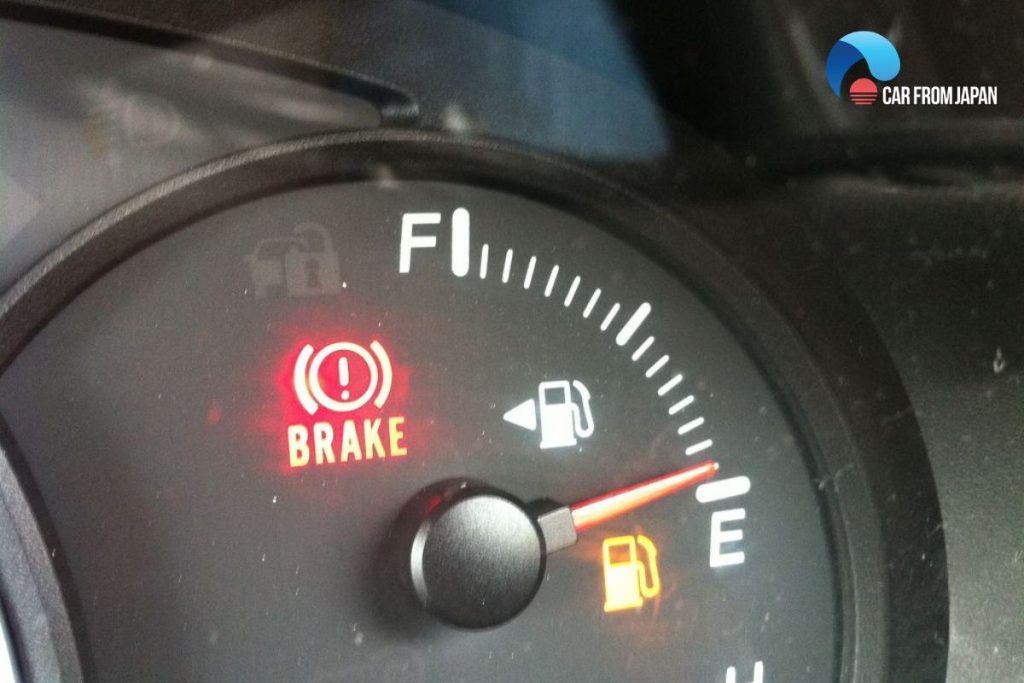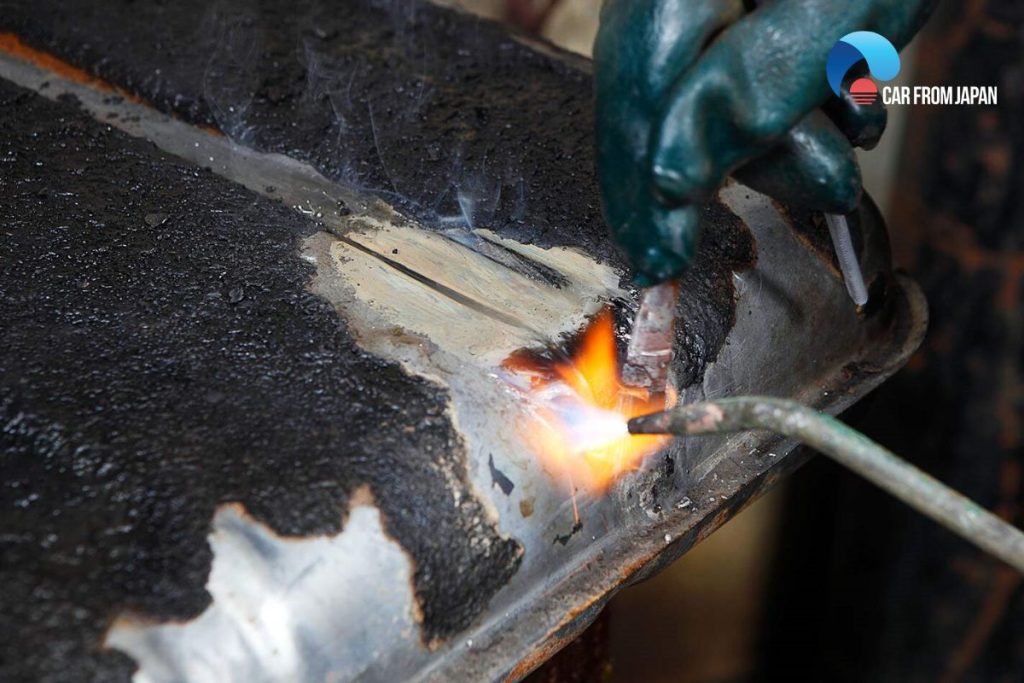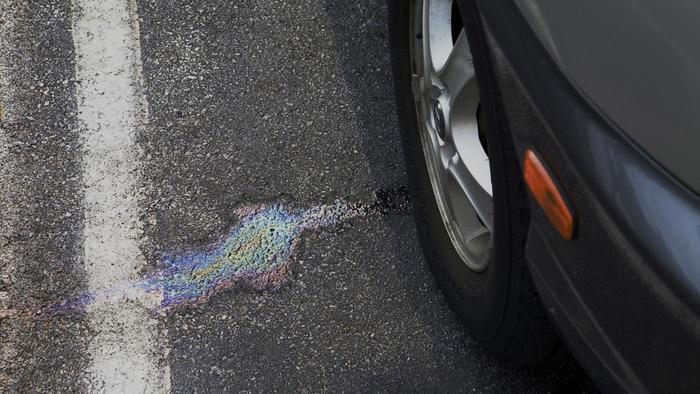When driving a car, a leaking gas tank isn’t the most common problem but could be your worst nightmare.
Gas leaking from cars is quite risky, if not repaired. Besides costing you a lot of money in wasted fuel, it can be lethal in case of an explosion or fire.
Gas tank leak repair, however, is not that expensive. In this article, we have focused on the popular reason behind the ways of how to fix a leaking gas tank.
Contents
- Common Causes of Gas Leaking from Car
- How To Fix a Leaking Gas Tank?
- FAQs on Gas Tank Leak
- How much does it cost to fix a gas tank leak?
- Can you drive a car with a leaking gas tank?
- Can a hole in a gas tank be repaired?
- Why does the car smell like gas?
- Can I weld a gas tank to repair a leak?
- Is a leaking plastic gas tank easier to repair than a metal one?
- Why do some leaks reappear even after using a fuel tank repair kit?
Common Causes of Gas Leaking from Car
A gas tank leak may happen because of sharp objects like rocks, which are thrown up by the car’s tires.
The serious collision will cause small holes in the gas tank, then it starts leaking. Punctured gas tanks should be replaced as soon as possible.
Corrosion
In some areas, snow and salt will corrode your car tank more than usual. Depending on the position of the leak, there might be a serious risk that the leak becomes worse if it isn’t fixed.

How To Fix a Leaking Gas Tank?
Many drivers asked: How to repair a leaking gas tank? Well, you can get your gas tank repaired by a mechanic.
They might only repair it without fully replacing it and show you the reason behind the leak. Moreover, it is always advised to go for some effective tips by experts for more understanding.
However, if you want to save more, you can do the gas tank leak repair job at home. But to do so, you should have a basic understanding of how it works.
It will not take you more than $100 to get the job done. Keep reading to know the detailed stages how to fix a leaking fuel tank efficiently.
Necessary Tools
- Clean towel or rag
- Filtration mask
- Safety glasses
- Jack stands
- Sandpaper
- Gas tank repair epoxy putty compound
- Rubbing Alcohol or other degreaser
- Car jack
- Vinyl or kitchen gloves
How to Do
Step 1: Jack up the Vehicle
Firstly, you need to lift the car to a height where you can easily insert jack stands underneath it.
Now, you slowly lower the jack to maintain a height where you can easily get underneath the vehicle and perform the repairing task.
Use a jack if you need to access the gas tank on a vehicle. A car’s fuel tank is accessible from below, so you won’t be able to reach it without using a jack.
Place the jack underneath a jack point along the car’s frame, lift it up, then position the jack stands around it to support the car’s weight.
Lift up the rear end of the car on both sides. Then, locate the tank, which will be underneath the gas cap you open when refueling your car.
- Park on solid, flat ground before attempting to lift the car. Make sure it’s stable on the jack stands before you crawl underneath it.
- Unless the gas tank has already been removed from the vehicle, you can’t repair it without getting underneath it. Most leaks are visible from the underside and can easily be patched up.
- If you’re fixing an accessible tank, you won’t have to use jacks. For example, jacks aren’t necessary for motorcycles or lawnmowers.
Step 2: Locate the Leak or Hole in the Gas Tank
Once you are under the gas tank, check it carefully to locate the source of leakage or small holes dripping gasoline. Notice that in some cases, the hole is obviously small and hard to find.
Step 3: Sanding the Leaky Area
Now sand the holes using sandpaper. You need to cover an area of 1.5 to 2 inches around the hole.
Step 4: Wipe the Surface
After you are done sanding, use a degreaser to wipe the area with a towel. You can also use alcohol. Make sure all grime, dirt, and grease are cleaned away.

Step 5: Blend the Epoxy
For mixing the epoxy compound, the manufacturer’s manual will come in handy.
Use compounds from two different tubes to create a mixture and use it before it dries up. The instructions for mixing the compounds are usually written on the packet.
Step 6: Shape and Apply the Epoxy
Now, from the mixture, you cut a piece of about 1-1.5 inches. And, create a small shaped cone using the epoxy compound with a wider base at the bottom and a tip at the top
Step 7: Press the Epoxy in the Hole
Next, you use the top of the cone to fill in the hole in the tank. Keep pressing the epoxy until it fills the hole or holes for good and use the remaining to smooth the sanded area. A little bit of water can make the smoothening process easy.
Step 8: Fill the Tank with Gas
This is the last step in your gas tank leak repair job. Fill in the tank to the fullest, as you normally do. Once the tank is filled, look out for any signs of leakage.
If you followed the above-mentioned steps properly, the leak should be sealed for good and you can take credit for a successful gas tank leak repair job.
Check out this video from WJ Guide to learn how to fix a leaking gas tank in the right way!
FAQs on Gas Tank Leak
To provide a great understanding of gas tank – the most essential car part, we will help car owners answer some common questions.
How much does it cost to fix a gas tank leak?
Between $50 and $120$. Since fixing a gas tank leak is such a simple task, the mechanic’s shop usually takes $120 maximum for a repair facility. Some car owners can even fix them at home.
Can you drive a car with a leaking gas tank?
We suggest you do not. This is because gas is strongly flammable. Not to mention, the gas might create a slick surface, which is very dangerous for other drivers.
Can a hole in a gas tank be repaired?
Yes, but it is quite complicated. If you find a hole in the gas tank of your automobile, it is possible to fix it without replacing the whole tank.
Before repairing, you need to perform at least three steps: First of all, you need to remove the fuel lines. You do not want fuel to get in the way when fixing.
Second of all, it is suggested to clean the tank thoroughly and completely.
Lastly, you must use a wax scraper to scrape off the oil and old rust coating.
Why does the car smell like gas?
Many factors create these issues, however, most of them are from gas tanks.
If the fuel pressure regulator is not compatible, the gasoline will burn too much and be wasted. This could lead to gas fumes oozing out from the exhaust of your vehicle.
Not to mention, these vapors also get inside the ventilation system from the leaking and cause the interior to smell like gas.
Can I weld a gas tank to repair a leak?
Only after it’s been properly drained, cleaned, and purged of fumes. Otherwise, it’s dangerous and can cause an explosion.
Is a leaking plastic gas tank easier to repair than a metal one?
Sometimes. Plastic tanks can be patched with specialized plastic welding or epoxy, while metal tanks often require welding or replacement.
Why do some leaks reappear even after using a fuel tank repair kit?
Because the surface wasn’t properly prepped. Oil, rust, or moisture prevents sealants from bonding, and vibrations can reopen weak patches.
So now you know the basics of how to fix a leaking gas tank. Hope you can find this piece of information helpful and see you next time with more insightful Car maintenance tips!



